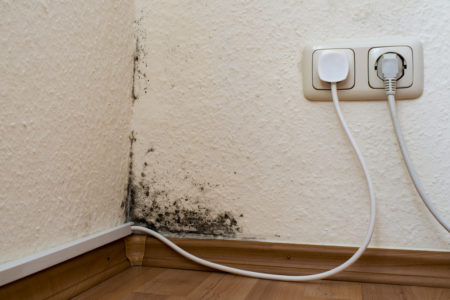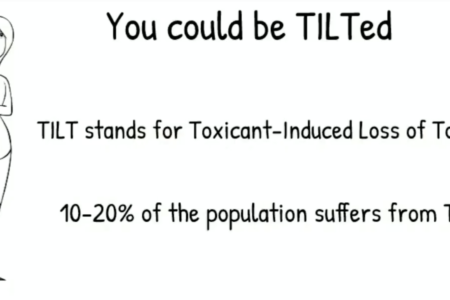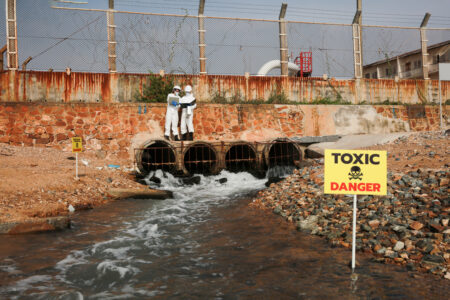
Share On Social!
The relatives of American soldiers encounter harmful daily exposure from environmental issues found in the housing they’re provided with by the U.S. Government, reports show.
Black mold, plumbing problems, poor water quality, and other concerns are among the harms to which service members, their spouses, and children are exposed. 
These complications originate from low-quality construction, according to Military Times.
The Military Family Advisory Network (MFAN) conducted an online survey seeking feedback on the state of military housing in January. Shannon Razsadin, MFAN’s executive director, said the results were alarming.
“Some are dealing with major long-term implications, and while things probably can’t be made right for them, we do hope that moving forward, families have a safe place to live,” Razsadin told Military Times. “We feel strongly that a safe home is not something that a family should have to worry about.”
Environmental exposures like these can trigger Toxicant‐Induced Loss of Tolerance (TILT), a disease that causes people to experience:
- difficulties with attention, memory, and mood
- gastrointestinal problems
- allergy-like symptoms
- migraines and headaches
- fatigue and muscle pain
Potential Harms
Nearly half of the families who took MFAN’s survey expressed dissatisfaction with their living conditions, according to Razsadin.
Furthermore, Reuters’ in-depth investigation series, “Ambushed at Home,” outlines varying, persisting issues with military housing — complications that can lead to life-threatening illness such as cancer.
The Pentagon’s Inspector General reviewed some of the houses on these bases four years ago, finding 282 defects at 89 homes, according to Reuters. Some of the issues included:
- Fire hazards
- Faulty wiring
- Mold growth
- Inadequate installation
- Lacking proper inspection
- Lack of maintenance
These housing problems are not being handled adequately by government officials, according to Florida Rep. Debbie Wasserman Schultz, who is also a chairwoman on the military construction panel.
“It feels like the military leadership sort of washed their hands of any oversight of the private contractors that built and managed these family housing units,” Wasserman Schultz said at a February 2019 House Appropriations hearing. “They essentially left it to the private contractors completely with no oversight. That’s not what Congress would have intended.”
Worse, the chemical exposure problem runs deeper than just housing and contains wide-reaching impacts.
Potential Latino Impacts
Latinos serving in the armed forces, and their families, could already face harmful contamination from drinking water on military bases.
Worse, Latinos make up 12% of active-duty personnel. That number has tripled in the last 30 years, and it will continue to do so, according to the Pew Research Center. However, MFAN’s survey report did not provide racial demographics.
Still, the loved-ones of Latino and all service members require safe housing.
The report also found that some of the interviewed families lacked leadership support and the financial means to change their situation.
“The concerns of families are ignored, and families are expected to tolerate the conditions,” the survey report states. “Many were told that mold was dirt or that nothing could be done about visibly growing mold on windowsills, walls, and ceilings.
“Military families don’t always have options outside privatized base housing due to limited Basic Allowance for Housing and/or a tight rental market. Families are faced with a decision to stay where they are and risk long-term health impacts or pay out-of-pocket to move their family elsewhere, if there is available housing outside the installation.”
Potential Solutions
While government, military officials take the necessary steps needed to change underlying problems, families become knowledgeable about the impacts of these environmental exposures.
Researchers at the Hoffman TILT Program have developed numerous resources to help people identify the key triggers causing sickness to develop.
Two options that help determine these problems include:
- Quick Environmental Exposure and Sensitivity Inventory (QEESI): a validated questionnaire for chemical intolerance and the most widely used screening instrument available for personal use. It’s also a useful tool for you to take to your doctor to explain your exposures and symptoms.
- Brief Environmental Exposure and Sensitivity Inventory (BREESI): a three-item screener for chemical intolerance with excellent predictive validity. It’s a useful tool for a quick assessment for TILT. Ideal for personal or doctor office assessments and epidemiological studies.
You can use these surveys to identify the environmental issues that are causing symptoms. That information could also be used to inform others, such as doctors or military leadership, to support the problems at hand.
Three other steps Hayward Health Homes recommends keeping continuous fresh air flowing, sealing the entire house correctly, and removing toxic products from the cabinets.
The government is also taking steps to address the issues at hand, according to the Military Times, including:
- The Department of Defense collecting information about these health threats
- Their work with the Defense Health Agency to address policy, procedural problems
- Congressional hearings that give those affected opportunities to testify
- Military officials beginning to retrain leadership
To learn more about chemical intolerance, visit the TILT website.
To discover other environmental issues impacting Latino and all Americans, read Salud America!’s chemical exposure coverage.
By The Numbers
1
Quick Survey
Can help you find out how chemically sensitive you are



